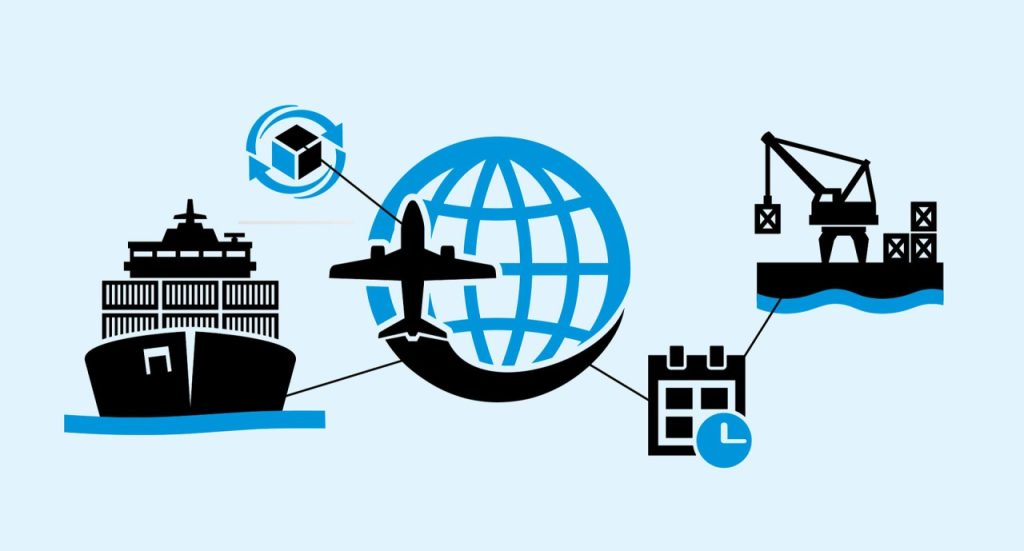Challenges of Global Trade and Supply Chain Disruptions

As the world becomes increasingly integrated, global trade becomes the beating heart of the global economy by allowing countries to specialise on what they do better than others. Today, however, remarkable crises of supply chains, global in nature, threaten the integrity of global trade, with consequences for every business, economy and consumer on Earth. In the recent years, various factors – from the COVID-19 pandemic, to geopolitical tensions, to climate change and natural disasters – have revealed the fragility of the global supply chains. This article addresses the complex dynamics of global trade, highlights what is causing the supply chain disruptions and their effects, and outlines possible ways to tackle the challenges.
The Evolution of Global Trade and Its Significance
While humankind has always bartered raw materials and exchanged goods, global trade has evolved over the past 2,000 years from localised markets to complex international networks by which products, services and capital travel around the world. Globalisation in the late 20th century increased the pace of global integration, creating unprecedented interdependence among nations. Today, global trade is not only a key source of economic growth but also a foundational element of international relations in which trade agreements and alliances are written into the fabric of diplomacy and political security.
This helps explain why global trade isn’t just an engine of growth but an enabler of industries, jobs and living standards. By linking consumers with firms in an extraordinarily diverse number of products and services, trade allows consumers to choose from a broader set of goods and services, and drives intense competition, thereby forming critical incentives for innovation and efficiency. At the same time, the increasing complexity of global supply chains means that any disruption can have cascading consequences, stressing the importance of resilient, adaptable and robust trade networks.
Key Factors Contributing to Supply Chain Disruptions
The root causes of supply chain disruption are multiple and can range from direct assault to more subtle pressures and tradeoffs. One of the most dramatic causes involves geopolitical instability, which often culminates in trade wars, sanctions and embargoes that can separate countries, leading to constraints on commerce. The effects have been seismic. For example, the conflict between the US and China has triggered an exchange of ‘tariffs and regulations that completely altered the economics of global supply chains’, noted the chief procuring and supply chain officer at the US$70 billion home improvement company Lowe’s in 2019.
Natural hazards and pandemics also play a role, but as a major production and logistics disrupter. For instance, factory shutdowns, port closures and labour shortages during the COVID-19 pandemic have led to delays and increased costs across supply chains worldwide. Environmental changes due to climate change are starting to gain attention, as extreme weather events and changing environmental regulations also constrain global trade. Identifying and understanding these factors will remain relevant for business and policymakers, given their importance for building supply chains that are more resilient to future shocks.
Impact of Supply Chain Disruptions on Businesses and Economies
Businesses with more complicated, globalised supply chains oftentimes experience the full force of supply chain disruptions. If a key component or raw material is held back, the whole production line can come to a standstill. Incurred costs, lost benefits and delivery penalties can ensue, in some cases leading to bankruptcy. For small and medium-sized enterprises (SMEs) that typically have insufficient financial and personal flexibility to absorb such shocks, this can be devastating. Moreover, consumers become wary of purchasing from a firm that, as a result of supply chain disruptions, has been unable to deliver at the agreed time and at the advertised price.
More generally, such difficulties can affect national and global economies. Shortages of essential goods, such as semiconductors, have stymied output in sectors including automobiles and electronics, contributing to sluggish growth and heightened inflation. Supply chain disruptions transmitted to the rest of the world via global supply chains also create new inequalities between countries. For instance, nations with less diversified economies or weaker infrastructure are more exposed to shocks in global supply chains. Given these systemic risks, more and more voices are calling for international cooperation and policy interventions to avert risks from global supply chain disruptions.
The Role of Technology in Mitigating Supply Chain Risks
In addition, technology is an important tool for supply chain disruption alleviation. Digitalisation, especially through the Internet of Things (IoT), blockchain and artificial intelligence (AI), can improve supply chain management. Companies may better monitor their supply chain through live tracking of goods in transit, ensuring supply chain continuity and service quality through the preemptive response to delays, which would otherwise escalate into disturbances.
Blockchain can help trace origin and movement of goods to provide a secure, transparent audit trail and improve compliance. Advanced AI and machine learning can help identify certain disruptions before they happen and could be used to constantly optimise supply chains (again, creating resistance to disruption). Using these technologies to create more resilient supply chains will require substantial new investment, and staff with the right skills. Education will also play an increasingly important role.
Strategies for Building Resilient Supply Chains
Resilient supply chains will emerge only through a multilayered approach of technological innovation, planning and value-chain collaboration. Flexibility is a key element of this resilience strategy, along with diversifying not just in terms of suppliers but also geographic locations. Spreading their materials sourcing over a range of suppliers across numerous locations allows companies to be less dependent on any one source, and to find alternative routes for a lessening of supply chain disruption. Experts also point to nearshoring and reshoring – or bringing production closer to one’s home markets – as another strategy for reducing lead times and improving supply chain resilience.
Additionally, adapting the supply chain’s approach to resilience through more agile supply chain practices offers opportunities for greater flexibility and responsiveness, so firms can proactively adapt to and withstand uncertainty. The objective here is to enable more adaptable supply chain networks (eg, creating more dynamic, heterogeneous networks; more interactive, segmented networks, where resources can be adjusted according to need); adjusting operations based upon distinct strategies for mitigating disruptions across sub-networks; and working more effectively with trading partners, including suppliers, logistics service providers and customers, to better coordinate responses to disruptions and share resources to overcome them. The aim is to create supply chains that are adaptable and sustainable, not just resilient.
Future Trends and the Path Forward for Global Trade
With these trends in mind, what should technologists and businesspersons look out for, regarding trade and global supply chains over the next decade? It seems to me that key macro-forces will combine to optimise or disrupt mainline supply chains. Sustainability (green) and certifications (ethical) on sources and processing will become very important. Consumers, investors and regulators are paying closer attention to how things are made and transported, forcing more organisations to embrace supply chain sustainability. This means lower carbon footprints, less waste and improved fair work practices throughout the line.
The second is a move towards regionalisation with firms retreating from a globalised economy and creating regional supply chains to reduce risks associated with the geopolitics of trade and investment, as well as the barriers to trade introduced by governments (for example, levies on imports of steel from China into the US). The third trend is also a Roman strategy – the digitalisation of supply chains will continue to transform firms’ approaches to efficiency, resilience and innovation. Firms will have to respond to these trends by further increasing the globalisation of their supply chains while maintaining their regional and local embeddedness, while also providing supply chains that balance what Rose-Ackerman terms the ‘delicate trilemma of stakeholder demands’.
Conclusion
In conclusion, global trade and supply chain disruptions present both challenges and opportunities for businesses and economies worldwide. While the interconnected nature of modern supply chains has enabled unprecedented growth and efficiency, it has also exposed vulnerabilities that can have far-reaching consequences. By understanding the key factors contributing to supply chain disruptions and adopting strategies to build resilience, businesses can better navigate these challenges and emerge stronger in the face of adversity. As we move forward, the integration of technology, sustainability, and regionalization will be crucial in shaping the future of global trade and ensuring the stability and prosperity of the global economy.







